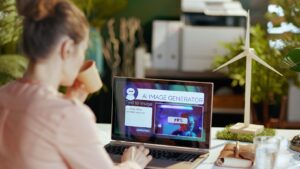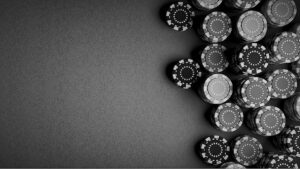
It seems that choosing the right boots is simple because the range in specialized stores is quite wide. Unfortunately, a universal pair that would be equally suitable, for example, for walking, hunting in the fall, and fishing from a boat in the summer simply does not exist. We will tell you how to choose shoes for the season and help you understand the variety of materials.
The Offers on the Market
Several options for hunting footwear are available in specialized stores and marketplaces. The TideWe assortment includes excellent examples of such boots.
Option one is trekking/hunting boots or sneakers with gaiters. This is the most comfortable option for walking, but there are some nuances. If you have to walk on the grass (especially if you have to walk on the grass a lot), the trousers will wear out a lot. So much so that lightweight membrane or windproof trousers are “killed” due to constant friction against thorny stems in literally half a season. The second point is the nettle, which everyone probably had to cross during duck hunting. Mature floodplain nettle burns through any single-layer trousers, even those made of Cordura. If you add heat and sweat, mosquitoes, and midges. The sensations are unpleasant. Yes – you can use chaps, but the main drawback of boots/sneakers remains – the shallow depth of the ford. Yes, and by the way, uncut grass and weeds kill not only the membrane of trousers but also shoes. So, light shoes will quickly begin to get wet, but in heavy and durable shoes, the foot in the sock will still promptly become wet, not from the outside but from the inside.
The second option is classic waders with boots attached to the belt. Yes, walking for a long time in them requires special training from the ankle. However, the problems of both Ford and Mud are solved, and when using the correct “intermediate layers,” dry feet in shoes are also solved. And you can wear the lightest trousers in boots without fear of “killing” them below the knee in a couple of weeks. The best thing to do is to have both options in stock, allowing you to wear shoes per the conditions.
General Criteria for Selecting Hunting Boots
Hunting boots are an essential piece of equipment. When choosing, consider the materials used to manufacture a particular model.
Quality Material
This may be the first thing people pay attention to. Currently, you can find shoes made from the following materials.
- Genuine leather is considered a classic material. Leather boots have good thermoregulation and vapor permeability. Also, leather products “remember” the anatomy of the leg. Leather is used for shoes of all seasons.
- Nylon fabric is a durable synthetic material with waterproof properties. Shoes made of nylon will retain their shape, which means they will last a long time. However, nylon’s primary disadvantage is that they do not have a vapor-permeable function. That is, your feet will not “breathe” in such boots.
- Cordura is a dense nylon fabric made using polyurethane and special water-repellent impregnation. In addition, it sometimes contains 10% cotton, significantly increasing the material’s wear resistance.
- Oxford, like Cordura, is made from polyamide cut and twisted fibers, which makes boots made from this fabric highly wear-resistant. Oxford is also distinguished by its flexibility, lightness, and moisture-proof properties.
- Nubuck is a durable and lightweight fine-haired leather. It retains heat well in winter and is easy to wear in summer. But, alas, it does not tolerate high humidity. Without treatment with a water-repellent spray, the nubuck structure will rapidly deteriorate.
Membranes
The membrane is a multilayer fabric with micropores invisible to the eye. Its main functions are to protect shoes from getting wet, retain heat, and ensure the absence of a “greenhouse effect.” It will prevent your feet from getting damp and will maintain a comfortable internal microclimate, which is very important for hunters and fishermen, regardless of the season.
Sole Material
This is also an essential factor because the sole depends on comfort and, in some cases, safety.
- Its wear resistance and thermal insulation distinguish the polyurethane outsole. However, this synthetic material cannot withstand temperatures below -20°C. Therefore, it is recommended to use such boots at slightly negative temperatures.
- The TEP sole is wear-resistant, comfortable, and suitable for long walks. Shoes made from TEP practically do not slip, and most importantly, they can withstand temperatures down to -40°C.
- EVA is a soft and almost weightless material. Shoes with EVA soles evenly distribute the load on the foot and retain heat well. However, the material begins to slip and collapse at extremely low temperatures (-30°C and below). Therefore, ethylene vinyl acetate is not suitable for harsh winters.
- Phylon is a lightweight, springy material made from EVA foam granules. The Phylon sole does not weigh the shoe down and provides excellent shock absorption. However, like EVA, the material is not resistant to extremely low temperatures (from -30°C and below).
- The rubber outsole is distinguished by its long service life. It is resistant to abrasion and deformation. However, such a sole has a significant disadvantage—a lot of weight. For hunting, where constant movement is necessary, such shoes may not be suitable, as your feet will tire faster in them. At temperatures below -20°C, the material will begin to crack.
First, you should decide on the seasonality and type of hunting. This way, you can choose the optimal materials that suit your conditions and provide the best results.
Conclusion
The issue of proper equipment arises more acutely than anywhere else on hunts, where you need to move a lot. At the beginning of the season, this includes hunting with a pointer, spaniel, or retriever, running duck hunting, and various other options for hunting different game birds. Few people underestimate the importance of camouflage or weapons, but footwear often needs to be noticed. Meanwhile, this is one of the critical elements of equipment. The tips in this article will help you decide on the right shoes for different types of hunting.















